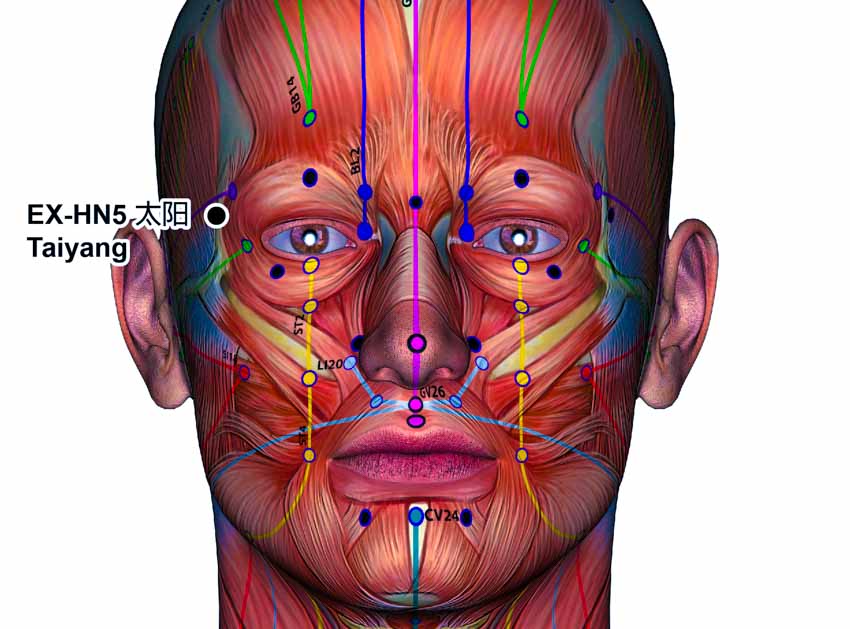
Acupuncture improves quality of life for migraine patients by relieving pain and tension and reducing frequency of attacks. Researchers from the Qingpu Hospital of Traditional Chinese Medicine who conducted a clinical trial comparing manual acupuncture and electroacupuncture treatments found better patient outcomes with electroacupuncture. [1]
Efficacy indicators in this study included the duration of pain, frequency of attacks, and Visual Analogue Scale (VAS) scores. All figures demonstrated more significant change in the electroacupuncture group, with pain duration decreasing from 8.96 ±2.53 to 2.61 ±2.16, frequency decreasing from 9.75 ±3.00 to 3.38 ±2.19, and VAS scores decreasing from 6.96 ±1.14. For the manual acupuncture group, pain duration decreased from 8.26 ±2.98 to 5.35 ±2.19, frequency from 9.96 ±2.71 to 6.00 ±2.99, and VAS scores from 7.07 ±1.17 to 4.78 ±1.63.
Results were interpreted with a four-tier symptom scoring system. The electroacupuncture group had an 83.3% (based on weighted tiers of improvements and symptom scores) efficacy rate with 2 cases recovered, 14 cases significantly effective, 9 cases effective, and 3 cases ineffective. The manual acupuncture group had a 63.0% efficacy rate with 0 cases recovered, 6 cases significantly effective, 11 effective, and 10 ineffective.
The sample of cases comprised 55 patients who were admitted into the hospital from February 2018 to September 2020. The patients were randomly divided into two groups. The manual acupuncture group included 10 male and 18 female patients with a mean age of 48.29 ±10.28 and a disease course of 43.29 ±30.83 months. The electroacupuncture group included 12 male and 15 female patients with a mean age of 44.59 ±11.81 and a disease course of 40.89 ±30.77 months. All patients admitted into the study met the TCM criterion of Gan Yang Shang Kang, meaning they had hyperactivity of the liver yang. Patients with intracranial space occupying lesions, cerebrovascular diseases, brain trauma, arteritis, and other severe diseases were excluded from the study.
The following acupoints were used in the treatment procedure for both the manual and electroacupuncture groups:
- GB20 (Fengchi)
- GV20 (Baihui)
- EX-HN5 (Taiyang)
- LI4 (Hegu)
- LV3 (Taichong)
- KD3 (Taixi)
Patients laid in a supine position. Then, filiform needles (40–50 mm in length and 0.25 mm in diameter) were sterilized and inserted obliquely or perpendicularly. After achieving deqi, a mild reinforcing-attenuating needling method was applied for one minute. For the electroacupuncture group, an electroacupuncture device was connected to the needles with a disperse-dense wave set to a frequency of 2/100 Hz and an intensity of 0.4 to 0.5 mA. Needles were retained for 20 minutes.
Treatments were administered daily for five consecutive days, followed by a two-day break. Seven days completed a session, and four sessions were conducted in total. The manual acupuncture group received treatment at the same points for the same duration and frequency, but without use of an electroacupuncture device. The results of this study indicate that electroacupuncture stimulation is effective for pain relief for migraine patients.
Reference:
[1] Clinical Effects of Electroacupuncture Combined with Cerebral Circulation Treatment for Liver-yang Hyperactivity Migraine, Hu Tiantian, Shen Lihua, Zhang Hui, Li Lechen, Journal of Navy Medicine, Vol. 42,No. 5, Sep, 2021.


